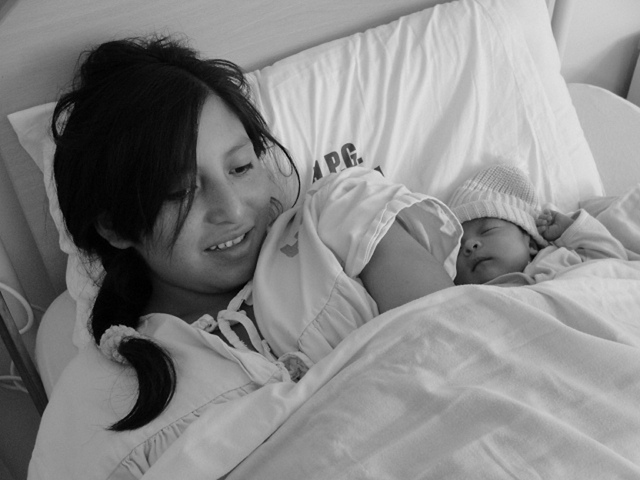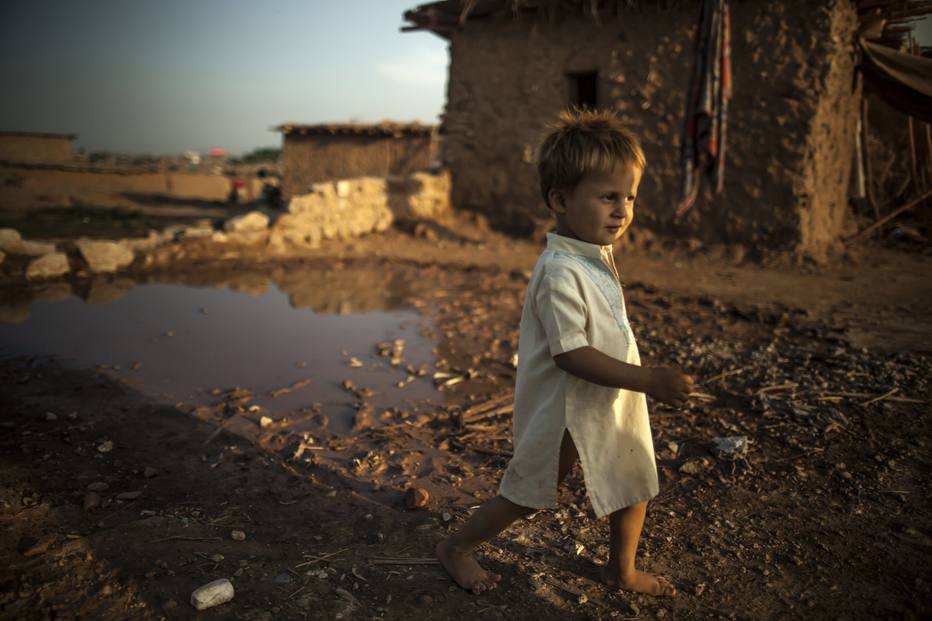
Maternal care during the pregnancy, birth and post-partum period is essential to reduce the high maternal mortality rate in Latin America. Credit: Courtesy of the Tigre municipal government
SANTIAGO, Sep 23 2015 (IPS) - In the last 15 years, Latin America and the Caribbean have met several key targets included in the Millennium Development Goals (MDGs), such as reducing extreme poverty, hunger and child mortality, incorporating more girls in the educational system, and expanding access to clean water.
However, as the world is setting out on a new challenge, meeting the
Sustainable Development Goals (SDGs) – the roadmap from here to 2030 – the region must make a bigger effort to fight, for example, maternal mortality and teen pregnancy, two of its biggest failures with regard to the MDGs, partly due to a patriarchal, sexist culture.
“The spending needed on sexual and reproductive health is low,” he added. “It hasn’t been clearly understood that it is absolutely indispensable to invest more in this area.”
The eight
MDGs, approved in September 2000 by 189 heads of state and government at a United Nations summit, were aimed at addressing development deficits in the first 15 years of the new millennium.
And on Sunday Sept. 27, at another summit in New York, leaders from around the world will approve the post-2015 sustainable development framework, which includes 17 SDGs that make up what is now called the 2030 Agenda for Sustainable Development.
With these new goals, the international community will continue to fight inequality and work towards sustainable and inclusive development.
Between 1990 and 2015, this region more than cut in half the proportion of people living on less than 1.25 dollars a day: from 12.6 percent in 1990 to 4.6 percent in 2011.
The proportion of hungry people, meanwhile, was slashed from 14.7 percent in the 1990-1992 period to 5.5 percent in 2014-2016.
In addition, employment statistics are better today than at any other point in the last 20 years; access to and completion of primary education have increased; and the illiteracy rate among 15 to 24-year-olds fell from 6.9 percent in 1990 to 1.7 percent in 2015.
The region has also made significant progress in girls’ access to primary, secondary and tertiary education, and has narrowed the gender gap in politics.
But these advances stand in contrast to the lack of progress in other areas, especially with regard to MDG 5: reducing maternal mortality and achieving universal access to reproductive health.
The ECLAC report stresses that in 2013 the overall maternal mortality rate in Latin America and the Caribbean was 85 deaths per 100,000 live births, representing a 39 percent reduction with respect to 1990 – far from the 75 percent drop called for by the MDGs.
Adolescent pregnancy also remains a pressing problem in the region, with a live birth rate of 75.5 per 1,000 girls and women between the ages of 15 and 19.

Miriam Toaquiza and her daughter Jennifer in a hospital in Latacunga, Ecuador. She is the only girl in a special room for teenage mothers, thanks to public policies fighting the phenomenon. Credit: Gonzalo Ortiz/IPS
“Adolescence, their development and fertility are based on ignorance in our countries,” said Molina.
Tamara, now 23, is an illustration of this. When she was 13, her 27-year-old boyfriend got her pregnant.
The unexpected pregnancy forced her to drop out of school, although she was later able to complete her primary education. She never went to high school. Three years later she had her second son, with the same father.
“I missed out on several things: of course, support from my mother and my father, but above all, sex education,” the young woman, who preferred not to give her last name, told IPS.
Tamara had a difficult life. Her mother did not finish primary school and her father was a drug addict and alcoholic. She was a witness to domestic violence throughout her childhood.
From a young age, she was raped by the oldest of her six brothers, who went to prison for 10 years for what he did, when she finally decided to go to the police, without her mother’s consent.
Today, about to have her third child – with a different man this time, but someone just as absent as the father of her first two – she said she is fighting to make sure her children get an education.
“I make an effort every day for my kids to study, I try hard to educate them, because I don’t want them to suffer like I did. I want to break the circle,” she said.
In Molina’s view, to address the gaps in sexual and reproductive health, political intentions should translate into spending on primary sexual and reproductive health care services for adolescents, training on these issues for health professionals, and effective sex education programmes.
“Mexico’s good sex education programmes are only partially functioning; the excellent programmes that Costa Rica had have been discontinued; and Colombia has made enormous efforts to come up with really good sex education teaching materials, but they have practically been doomed to fail by political and strategic questions,” Molina said.
“Something similar is happening in Peru, where there have also been good programmes but they don’t have strategic or political support from the government,” he added. “Argentina gets good results, but with strong support from the government in developing sex education programmes. The same is true in Uruguay.”
According to the doctor, the case of Chile “is the worst of all,” because “we are plagued with opprobrium and shame.”
“We were the last country in the region to have a law protecting young people with sex education, which was passed in 2010 but did not enter into force until July 2014. The situation here is embarrassing,” he said.
He added that in order to meet the Agenda 2030 target for preventing teen pregnancies, merely making birth control available is not enough, “because I could drop condoms and pills from a helicopter but it wouldn’t be an effective measure.”
The issue, he said, is that people have to actually use the contraceptives, and need to know when and how to do so – which requires education.
“The goal is preventing the first pregnancy, and to do that what is needed is education, education, and when everything else has failed, education and more education. And as part of that education – broad, in-depth sex education, without ideological bias,” he added.
Molina also stressed that both maternal mortality and adolescent pregnancy “are no longer technical, but political, problems” which require that states be responsible and implement effective public policies, without worrying about facing up to conservative power groups “who are ignorant traditionalists, and cause us terrible damage.”
As the region gets ready to sign on to the SDGs, the new challenges call for a more holistic, participative, interdisciplinary and universal approach.
Edited by Estrella Gutiérrez/Translated by Stephanie Wildes




